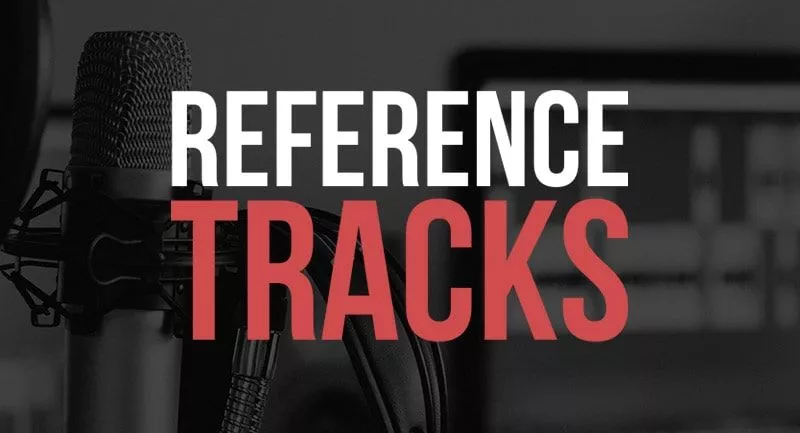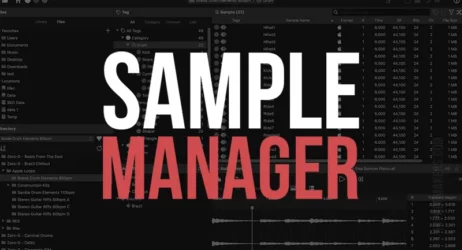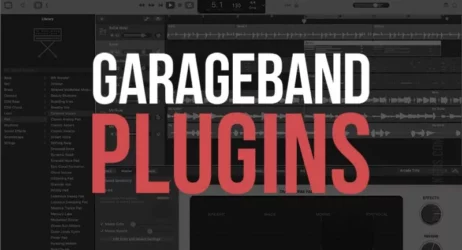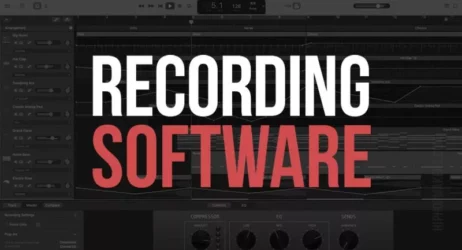This guide will answer what are reference tracks, should you use reference tracks, how to choose a reference track, and how to use them when mixing a song.
What Are Reference Tracks?
A Reference Track is a song from a music artist that is used as a benchmark for adjusting elements in your own production. For example, you might want to match the arrangement of your song to that of another or attempt to match the loudness of your master to the reference track.
- What Are Reference Tracks
- Should You Use Reference Tracks
- How Do I Choose A Reference Track
- How To Use Reference Tracks For Mixing
- Can I Use An MP3 As A Reference Track
- Where Can I Download Reference Tracks
- Are Reference Tracks Important
- Recommended Tools
What Are Reference Tracks?
A Reference track is an audio touch point to get the artist thinking about what they want their record to sound like and how it can be achieved.
A music producer can also have a better and clearer idea of what an artist is looking for. It is used as a guide for musical ideas, sound design, arrangement, the mixing stage, and mastering.
All artists have varied preferences. Consider the difference between artists like Damien Rice, Joni Mitchell, and Passenger.

Although we would put them all under the category of acoustic singer-songwriter but their records sound very different from others. Therefore, it is important to know where an artist fits into the spectrum and create sounds that everyone is happy with.
When used correctly, reference tracks do not hinder creativity and sound unoriginal. On the contrary, reference tracks allow artists to compare their music against the best ideas that already exist in music created by other artists. Reference tracks can help in various ways:
- It makes arranging a song easier by providing a guideline to structure your music.
- It ensures that your music is accepted and liked by your target audience.
- It provides creative benchmarks on which you can build your musical ideas without having to start from scratch.
Here is how you can use reference tracks for the core areas of your song.
Inspiration for Musical Ideas
You can start by finding a musical idea or chord progression that resonates with your work and recreate it in your DAW. You can then make subtle changes, such as note transposition or inverting the chords to create your unique version.
It is a good idea to use different reference tracks for various parts of your production. For example, you can take the melody from one song, a chord progression for another, and a drum groove from a completely different record.
What you need to do is borrow small pieces for various songs and come up with a unique way of blending ideas and transforming every sound to make it your own.
Sound Design
You can make good use of soundbanks and sample packs from other artists to create something new. In the initial days of house music and techno, every artist used the same drum machines, synthesizers and had access to almost the same sounds.
Arrangement
Song arrangement can be challenging for some artists, but a reference track can definitely make this task easier. All you have to do is find a song that has the perfect arrangement and carry that track into your DAW. Using an Excel spreadsheet or Google Docs, start listing out numbers by multiples of 4- 1, 5, 9, 13, and so on. These numbers will correspond to the bars in the track. List out all single sounds that you hear in the first column, and you now have a grid ready to fill in for every set of 4 bars where you hear a given sound.
This is an arrangement map of your reference track that you can use to structure your drums, length of buildups, and breakdowns around.
Related: 5 Places You Need to Listen When Mixing Audio
Should You Use Reference Tracks?
The primary purpose of using a reference track is to avoid reinventing the production process with every song you create. It is common for artists to copy any innovative sounds that they create. There are times when artists have to follow the trends if the entire genre decides to make a specific change, such as the loudness war.
Reference tracks help eliminate the guesswork behind how certain track elements work together. Building up various components becomes simplified with a clear reference point, and you can achieve a clear and precise professional mixdown that you are sure will work.
To make a creative and great-sounding piece of music, you don’t need a mixdown that is perfect with a unique arrangement, a never-heard-before sound design, and a crystal-clear master. The basic idea is to create something that can measure up to and compete with the best music out there.
How Do I Choose A Reference Track?
What you should look for in a reference track is perhaps more complex than just picking out your favorite song and using it. You have to choose references according to the specific things that you want to match. You might want to copy the drum sound of Eric Clapton’s “Bad Love,” or you want to recreate the feeling of the Family Band’s records.
Using a few reference tracks instead of one while staying within the bounds of the track you want to mix is a good idea. Stay within the established trends of the genre you are competing in without sacrificing the originality of your work.
How To Use Reference Tracks For Mixing?
Reference tracks are usually used to emulate the sonic characteristics of one track to another. Therefore, select a piece that has a good mixdown, drop it in your DAW, and try to copy it in your own way.
Here is how you can do that:
- Import the song into your DAW and direct it to a new bus that you can call ‘Reference.’ (All other tracks are directed to another bus called ‘Mix’).
- Next, match the volume of the reference track to your own. You will have to rely on your ears as loudness meters can be misleading at times.
- At this point, you are ready to A/B your soundtrack and the reference.
- How are the drums panned?
- How loud are the low end and the kick?
- How bright are the vocals and synths?
- How wide is the FX?
Reference tracks work best to outline the biggest mix moves, like tonality and overall balance. An excellent reference highlights the relationship between bass and kick, where the vocals sit, and effect levels. This information helps artists avoid mixing too bright or too dark, too dry or too wet, or well-balanced versus poorly balanced.
It is crucial to remember that the reference track should not be copied exactly. Your mix will have a sound of its own based on how it was recorded, along with a multitude of other factors. Allow the mix to guide itself, and don’t try to force your track in a direction that doesn’t seem natural.
Can I Use An MP3 As A Reference Track?
It is suggested to use the highest quality possible for a reference track, and a 320kbps MP3 is a good option. For people who are new to audio production, gauging the difference between a high-quality MP3 and a WAV file can be challenging. However, if you know the difference, it is better to use high-quality formats for your reference pieces. MP3 320s and WAV work fine, but don’t go any lower than that.
There are several reasons for using high-bitrate files, but the prime factor is that if you use low audio-quality reference material, you will end up working towards a lower medium.
Keep in mind that using compressed formats or MP3s as reference tracks can be problematic. Various compression algorithms can lead to a variety of distortion. When referencing, it is always better to go for a high-quality sound, such as 96kHz, 24bit WAV file.
Where Can I Download Reference Tracks?
There are several websites online with free reference tracks that you can download. I have listed a few here:
- SoundCloud
- OCReMix
- Spotify
- Amazon Music
- Google Play
- Pandora
- HDtracks
- AccousticSounds
Are Reference Tracks Important?
Reference tracks allow you to create music that translates well in different environments and playback systems. Many artists lose perspective while mixing their tracks, and a reference track can provide helpful insight at this point.
All you need to do is listen carefully to the track and compare it to your mix. Once you do that, you can better analyze anything that is not where it should be in your mix. Therefore, a reference track can become a quick fix and simplify the mixing process.
While some may argue that using a reference track is a bit like cheating, we think that using a reference track essentially ensures that your track is in line with the best mixers and music producers in the world. As long as you think of the reference track as a starting point and maintain the originality of your work, there’s no harm in using it.
Recommended Tools
Here are the most popular items on Amazon.
Last update on 2025-10-27 / Affiliate Disclaimer
Summary of Reference Tracks
Reference tracks are tracks from music artists that you can use as a benchmark for adjusting elements in your own production. As an example, you might match the arrangement of your song with that of another, or you might try to match the loudness of the master to that of the reference track.
I hope you now understand reference tracks and how to use them when mixing music. Knowing this information will help you with creating professional sounding music.











